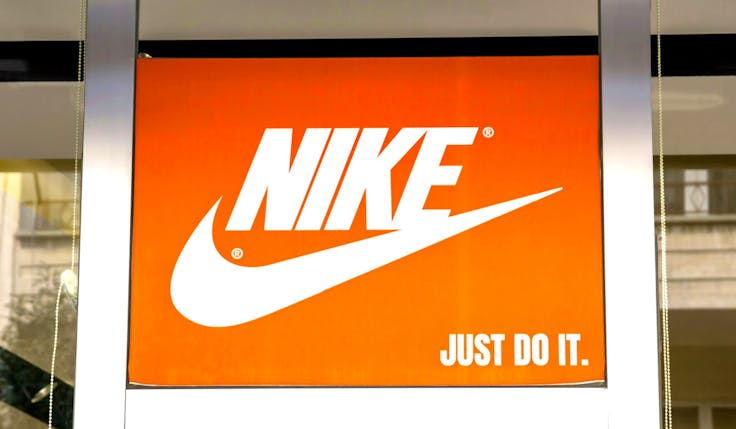Cookies are dying for a reason and it’s time for senior marketers to talk about it
For the last four years our industry has been discussing the demise of cookies, almost never stopping to ask whether they were truly a good idea in the first place.
 If you are a CMO or other generalist marketer, you probably know enough about ‘the death of the cookie’ to want to pass the topic on to your media or digital teams.
If you are a CMO or other generalist marketer, you probably know enough about ‘the death of the cookie’ to want to pass the topic on to your media or digital teams.
However, as the industry returns from a heady week in Cannes, the Conscious Advertising Network is urging you not to.
For the last four years, our industry has been discussing the demise of cookies, or more accurately, third-party cookies, since Chrome announced that it would follow Safari, Firefox and other browsers in deprecating them. Since then, almost all the discourse has been about how to replace cookies, but rarely stopping to ask whether they were truly a good idea in the first place.
That isn’t to say that some solutions competing to replace cookies, such as data clean rooms, don’t have a role to play but we do need a hard conversation about hyper-targeting and personalisation. The sense of inevitability that cookies, or something akin to them, will stay has been fuelled by adtech and digital gurus but there are many senior media leaders at large companies who are quietly challenging this narrative.
Many marketers are terrified of being seen as outdated or behind the times if they ever question the importance of data. The mantra that acquiring first-party data is critical to the future existence of big corporations has become a near-universal truism. Yet empowering expert digital teams, who focus solely on technically what’s possible, to make all the strategic decisions ignores the critical need to sense-check what is actually right or even what makes marketing sense.
These are grown up questions our industry should be having and definitely worth putting up with a few eye rolls from your data teams to get to the bottom of.
Let’s start where every good marketing strategy should start: with the consumers that we are in service of.
The right to privacy or private life is enshrined in the Universal Declaration of Human Rights, the European Convention on Human Rights, and the European Charter of Fundamental Rights. In the coming years, the discourse will shift from ‘it’s a bit annoying that I get chased around the internet by personalised advertising’ towards ‘why are they invading my fundamental human rights’.
If that sounds like an extreme pivot then you most definitely have never worked in a customer services department where these complaints are becoming commonplace, nor truly stopped to consider the implications of GDPR, CCPA, or other similar regulations. If your business makes a commitment to deliver on the UN’s development principles, then an overzealous data approach could easily be violating that.
CMOs urged to use latest cookie phase-out delay as a reminder to get ‘on track’
When we talk about cookies, we are referring to the digital footprints that we all leave as we browse the internet. These footprints enable marketers to target, re-target, measure and attribute advertising to their target audience. However, this was never their intended functionality.
Cookies started out very specifically as a way for websites to recognise repeat visitors and positively customise their experiences accordingly, not for third parties to surreptitiously track consumers across the web.
Purveyors of personalised advertising often point to consumers’ positive perceptions of personalised advertising. However, this type of research lacks nuance. In research commissioned by ICO and Ofcom, when asked if it was acceptable that websites display adverts in return for being free to use, 63% of respondents said ‘yes’. However, this dropped to only 36% when it was explained what personal data is actually collected by ad tech intermediaries.
The cost of hyper-personalisation
Of course, in principle, the idea of reaching the right people, in the right place, at the right time is hugely attractive, as is the notion of removing waste by not reaching the so-called ‘wrong’ people. In reality there is always going to be a toss-up with reaching a broader audience and the costs of honing in on that perfect target. It makes sense and can be highly effective under certain circumstances.
But for the vast majority of advertising campaigns, marketers don’t actually need to target individuals, they just need to target cohorts of similar people they might want to communicate with in a similar way. For example, car owners are very likely to be shopping around for car insurance. Households with children are very likely to be heavy users of soap powder. It’s really not that complicated unless we choose to make it so.
After all, there is relatively little evidence that a focus on such hyper-personalisation actually works better. Many marketers who have changed their entire business strategy based on Byron Sharp’s How Brands Grow are oddly slow to acknowledge his own various analyses which suggest that hyper-personalisation offers little or no value to marketers at all.
Of course, most campaigns would benefit from consumer segmentation and comms strategy, but it’s not hard to see that the value of hyper-targeting and personalisation faces an uphill struggle if you truly factor in the costs.
Here’s the kicker though – those costs are pretty darn high. A recent ANA research showed only 36 cents of every dollar that enters the programmatic ecosystem effectively reaches the consumer after fees, data costs, wastage, fraud and viewability were taken into account. The same research also showed that the average number of websites advertised on was 44,000, with one campaign deploying advertising on over 100,000 websites.
Imagine if someone told you that they could better target your linear television budget to exactly the right consumers but in doing so they would divert three-quarters of your budget to ‘non-working’ media costs and that you would be advertising on thousands of television channels you have never heard of. Would you think it was a great deal?
Just because senior marketers cannot be expected to understand all the technologies that enable this in detail doesn’t mean they shouldn’t be free to question these outputs. CMOs should be mad about this, I’m sure their CFOs would be if they ever truly dug into it.
How brands like Diageo are preparing for the disappearance of third-party cookies
The acquisition of first-party data certainly is one way of responding to the death of the cookie. It will vary hugely by industry whether consumers are actually willing to give it to you and what value you can offer in exchange. If they knowingly and willingly give up that information, then at least you’re probably not violating their human rights.
A data acquisition strategy should factor in how expensive that data is to acquire, how costly it is to leverage, and how useful it truly is to speak to that one person versus millions of others. These are grown-up questions our industry should be having and definitely worth putting up with a few eye rolls from your data teams to get to the bottom of.
Advertising is an investment in the media ecosystem of the future and so much could be achieved with a greater amount going to high-quality journalism, entertainment and diverse voices.
Writing on behalf of the Conscious Advertising Network, Gerry D’Angelo & Jerry Daykin have between them overseen media at companies including P&G, Mondelēz, Diageo and Samsung.





